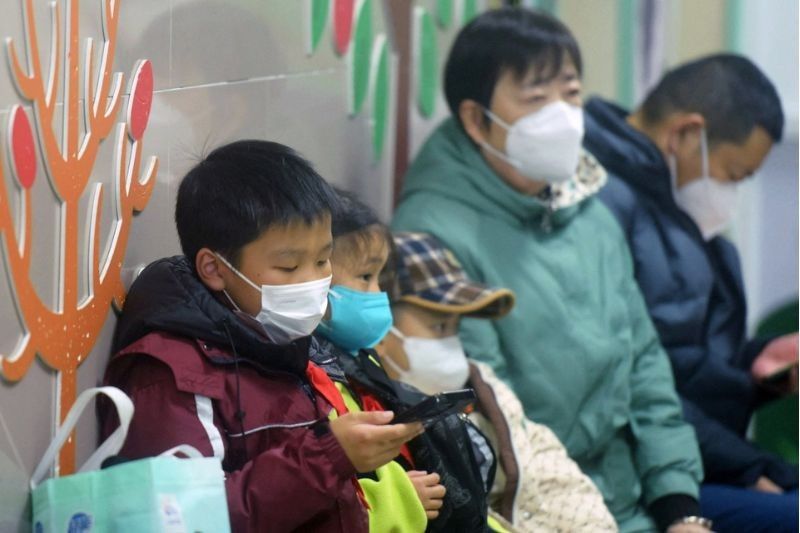Low influenza, HMPV cases in PH despite rising numbers in China, says DOH

MANILA, Philippines — The Department of Health (DOH) reported a decline in influenza-like illness (ILI) cases in 2024, reassuring the public that the numbers remain low despite rising concerns about respiratory infections in other countries, particularly China.
The Philippines recorded 179,227 ILI cases by the end of 2024, reflecting a 17% drop from the 216,786 cases logged in 2023, according to the ILI Surveillance System. Symptoms of ILI include fever, cough and colds, which can be caused by various respiratory viruses.
“This decrease may be attributed to better health-seeking behaviors and practices and better preparations by the health sector,” the DOH said in a statement.
According to the DOH, the top five culprits for ILIs in the country are rhinovirus, enterovirus, Influenza A, respiratory syncytial virus (RSV) and adenovirus.
Meanwhile, the Human metapneumovirus (HMPV), the sixth most common virus causing ILIs in 2024, accounted for only a small fraction of cases.
Of the 4,921 positive samples across six identified viruses, only 284 tested positive for HMPV as of Dec. 21, 2024. From December 1 to December 21, just 10 cases — or 2.9% of the total — were reported.
The DOH emphasized that HMPV detections were sporadic and showed no unusual clustering or demographic patterns in the country.
No trend of HMPV infections. Health Secretary Teodoro Herbosa also clarified the HMPV is not new and was discovered in 2001 in relation to respiratory infections.
“HMPV is not a new virus. We have been able to identify it for a long time. Its symptoms are not severe. Like the common cough and cold, it heals on its own as long as our resistance is strong,” he said.
Common symptoms of HMPV include cough, fever, nasal congestion and wheezing. In rare cases, individuals with weakened immune systems or preexisting conditions may develop bronchitis or pneumonia.
To prevent respiratory illnesses, the DOH urged the public, particularly children, the elderly and immunocompromised individuals, to practice good hygiene.
“The DOH reminds the general public, especially the young, immunocompromised, and elderly, to take caution by frequently washing their hands, avoiding crowded places when possible, and eating and drinking properly,” it said.
The agency reiterated that while the public should remain vigilant, there is no cause for alarm as HMPV cases in the Philippines remain low.
Increasing HMPV-caused illnesses in China
However, ILIs and acute respiratory infection rates have risen in several Northern Hemisphere countries, including China, according to the World Health Organization (WHO).
In a statement on Tuesday, January 7, WHO clarified that China’s current levels of acute respiratory infections such as those caused by HMPV remain within the expected range for the winter season.
“There are no unusual outbreak patterns reported,” the agency said.
Citing data from the China Center for Disease Control (CDC) as of Dec. 29, 2024, WHO noted an “upward trend” in respiratory infections, with influenza identified as the leading cause of respiratory illnesses.
Addressing claims that Chinese hospitals are overwhelmed by the surge in respiratory infections, WHO said that Chinese authorities reported otherwise.
RELATED: DOH: No WHO confirmation of alleged global outbreak
“Chinese authorities confirmed that the health care system is not overwhelmed, hospital utilization is currently lower than this time last year,” WHO confirmed.
However, it also recognizes how the co-circulation of respiratory pathogens may burden health facilities.
WHO emphasized that the rise in respiratory virus infections, such as HMPV, aligns with “usual seasonal trends” typical for this time of year in temperate countries.
Other regions experiencing increased influenza activity include Europe, Central America, the Caribbean, Western Africa, Middle Africa and parts of Asia.
“Current ILI activity in the southern provinces remains below that of the previous two years, while current ILI activity in the northern provinces is similar to levels seen at this time in the previous two years,” the global health agency added.
SARS-CoV-2 activity, a virus responsible for COVID-19, is currently low in Northern Hemisphere countries, following a period of high transmission during the summer months, according to information from WHO’s Global Influenza Surveillance and Response System.
WHO recommended taking “normal precautions to prevent the spread and reduce the risks” of these viruses. It urged the public experiencing ILI symptoms to stay home and avoid much contact with others, as well as mask wearing in poorly ventilated spaces.
- Latest
- Trending
































